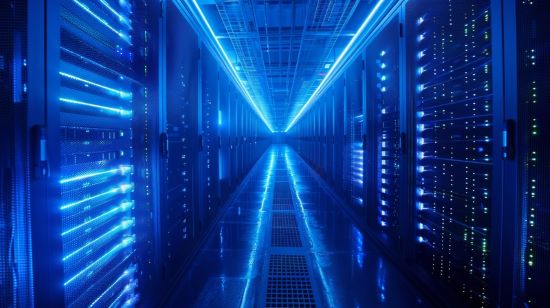The energy demanded by Generative Artificial Intelligence (GAI) derived from neural networks, deep and machine learning is proving to be powerful in two respects. The first type of “powerful” has to do with its versatility as a technology for numerous applications. The second type of “powerful” refers to the energy demands GAI requires to accomplish the new functions and activities we humans want it to do.
For the nuclear power industry, GAI is both a tool to enhance the performance of nuclear reactors, but as well, a reason for a nuclear industry renaissance. GAI needs lots of power to support the data centres that work with the Large Language Models (LLMs) used to train GAI.
GAI placed five times greater demand on data servers than standard search engines according to Sarah Myers West, Managing Director of the research group, the AI Now Institute. According to an October 2023 article appearing in Scientific American, the demand for AI on servers noted that data centre electricity use to date was accounting for up to 1.5% of global demand. That was then, but GAI capacity adoption trends show significant growth in AI server unit demand with as many as 1.5 million units shipping per year by 2027 from just one vendor, NVIDIA alone. By 2027, the addition of 1.5 million servers running at full capacity will require energy producers to generate 85.4 Terawatt-hours of electricity annually. In the October Scientific American article, it notes that this would be more energy “than what many small countries use in a year.”
Where is the energy being used? There are two phases involved with GAI: training and inference. The latter covers user queries and responses. Both phases are energy intensive with Google’s historic data demand history putting the ratio between training and inference at 40:60. OpenAI’s ChatGPT numbers require less energy for inference but remain energy intensive for training.
There are data centre energy demands that go beyond power to the servers. These facilities need additional energy to remain cool which could add 50% to electricity requirements.
How AI Improves Nuclear Plant Safety
Machine learning is already in use in existing nuclear power plants. AI algorithms provide real-time monitoring and predictive maintenance by sifting through the data being generated and identifying anomalies that human operators might miss. Jeremy Renshaw, an expert on technology innovation at the Electric Power Research Institute, describes how AI is enhancing precision noting that a human operator and inspector “only looks at pertinent data. Instead of searching for the ‘needle in the haystack,’ we remove the haystack.”
AI used in existing nuclear power operations doesn’t replace human analysis. It enhances and speeds up operator responses. Machine learning can spot minor structural problems like cracks in tanks and pipes that are hard to detect when just monitoring gauges.
AI combined with a digital twin that runs in parallel with a real nuclear plant would dramatically enhance power production, and bolster efficiency and equipment performance.
AI combined with robotics can be used to do maintenance in areas of a power plant that would put human technicians at undue risk.
The Role of Nuclear Power in Growing AI and GAI Use
I am old enough to remember the nuclear accident at Three Mile Island that saw a partial meltdown of the reactor core in 1979. It coincided with the release of the movie, The China Syndrome, about a nuclear accident. The combination of the two made the public uneasy about nuclear power technology.
Three Mile Island was the worst nuclear industrial accident before the events at Chornobyl, in the Ukraine (then part of the Soviet Union), and later at Fukushima in Japan.
In the news in the last few weeks, the name Three Mile Island has reemerged because Microsoft wants to use the power from a reopened unit at the nuclear plant to provide electricity to its AI data centres.
Microsoft isn’t alone among the technology giants seeking nuclear energy to power existing and future data centres.
- OpenAI has invested in Oklo, a novel fission power plant, and in Helion Energy, a future fusion reactor.
- Google and Amazon’s Jeff Bezos are also investing in fusion startups, the former in TAE Technologies, and the latter in Canada-based General Fusion.
In a world where AI spending is projected to reach US $632 billion by 2028 and $1.81 trillion by 2030, it means energy demand for GAI will see rapid growth as well. GAI spending by 2028 is estimated to reach US $202 billion or 32% of overall AI spending.
The demand for nuclear energy, geothermal, renewable and thermal sites will grow as GAI and AI demand increases. The renewed interest in nuclear with the latest news about Three Mile Island still has to take into consideration the many challenges this highly regulated form of energy production undergoes. New nuclear projects in North America can take decades to be approved and built.
Will the approval process speed up in the future? Despite lobbying by technology companies looking for more power to fulfill energy demands for GAI, untangling the regulatory process because of past problems with this form of energy production could probably use AI and digital twin solutions to ease safety and operational concerns. New fission reactors will also need to address an old and persistent problem that impacts existing operations, the disposing of spent nuclear fuel, a current environmental problem that seeks a permanent solution.









